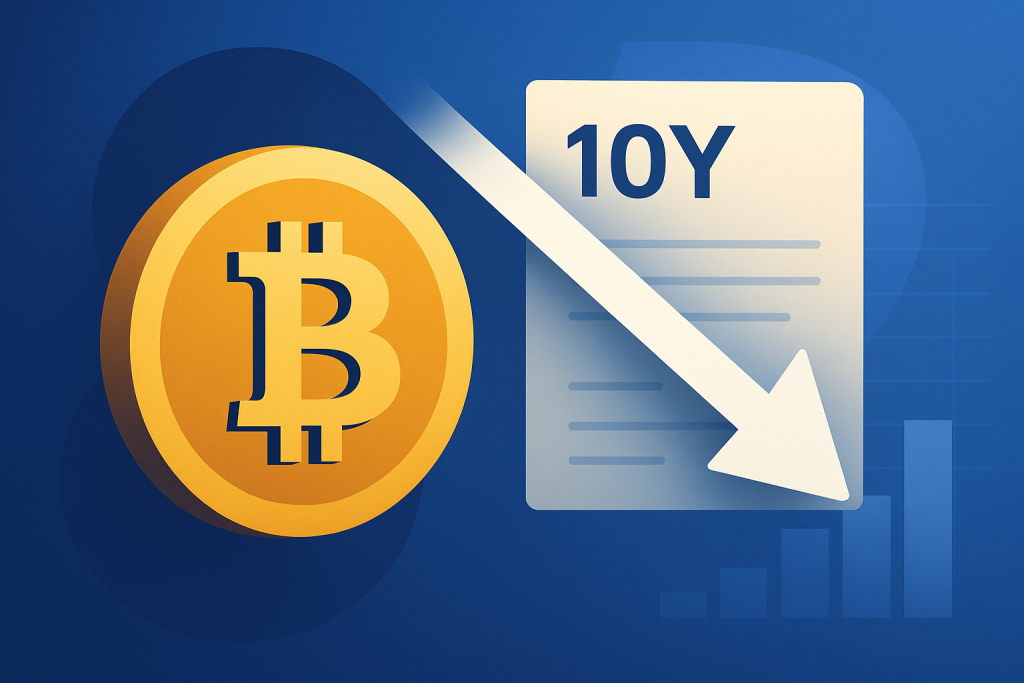October 17, 2025 — The yield on the 10-year U.S. Treasury note has fallen below 4% for the first time in several months, signaling a shift in investor sentiment toward safety amid mounting concerns about economic growth and policy uncertainty.
The decline comes as Federal Reserve officials debate further interest rate cuts, with recent statements from Fed Governor Christopher Waller suggesting that weaker job data and slower hiring justify another 25 basis point reduction at the upcoming October meeting.
Safe-Haven Demand Surges
Falling Treasury yields typically indicate growing demand for low-risk assets, reflecting fears of slowing economic momentum or potential policy missteps. Investors are moving capital from equities and riskier instruments — including speculative tech and high-yield credit — into government bonds.
What It Means for Crypto
For the crypto sector, lower yields could inject fresh liquidity into markets and revive risk appetite, historically favoring Bitcoin and major altcoins. When traditional yields decline, digital assets often benefit from investors seeking higher potential returns or diversification beyond fiat-based systems.
“The sub-4% yield is a psychological signal that monetary conditions are loosening,” said one digital asset strategist. “If the Fed continues easing, liquidity could find its way back into crypto markets.”
At the same time, analysts caution that volatility may increase in the short term. While cheaper borrowing costs support investment, macro uncertainty — including the ongoing U.S. government shutdown and delayed inflation data — could keep investors cautious.
Outlook
If the Fed delivers another rate cut later this month, many expect Bitcoin to test recent resistance levels as capital flows return to risk assets. However, any sign of policy hesitation or higher-than-expected inflation could reverse that optimism.
The bond market’s latest move is another reminder that crypto remains tightly linked to global liquidity cycles — and the next Fed decision could set the tone for the rest of Q4.


